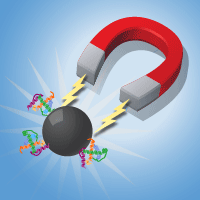Phosphoprotein purification overview
Introduction
Protein phosphorylation is an important mechanism for regulating protein function and activity. Many metabolic processes, such as signal transduction, transcriptional regulation, and cell division, are regulated via protein phosphorylation and dephosphorylation by kinases and phosphatases. Although only a relatively small percentage of proteins are phosphorylated in any given cell, understanding the regulation of protein activity by phosphorylation is vital to understanding many cellular pathways. Enriching for phosphoproteins prior to downstream analysis using methods such as two-dimensional polyacrylamide gel electrophoresis (2D-PAGE), mass spectrometry [including Matrix Assisted Laser Desorption/Ionization (MALDI) mass spectrometry], or liquid chromatography (LC) can increase the sensitivity of these analyses and the likelihood of detecting rare and novel phosphoproteins.
Tools for phosphoprotein and phosphopeptide enrichment
Takara Bio has utilized Immobilized Metal Affinity Chromatography (IMAC) technology to develop efficient and convenient tools for specific phosphoprotein and phosphopeptide enrichment using gravity/batch column, spin column, and magnetic bead-based methods. Specialized products are available for isolating and enriching phosphoproteins and phosphopeptides using different formats and purification scales, as shown in the table below. All of these products may be used to enrich cytosolic and membrane-bound phosphoproteins or phosphopeptides containing phosphotyrosine, phosphoserine, or phosphothreonine from mammalian cells and tissues.
| Comparison of phosphoprotein and phosphopeptide enrichment methods | |||||
|---|---|---|---|---|---|
| Use | Format | Binding capacity | Start to finish | Downstream applications | |
| Phosphoprotein Enrichment Kit | Phosphoprotein enrichment | Gravity columns | ~4 mg/column | <120 min | Mass spectrometry, 2D-PAGE |
| TALON PMAC Magnetic Phospho Enrichment Kit | Microscale phosphoprotein enrichment | Magnetic beads | 400 µg/ml suspension | 30 min | Mass spectrometry, 2D-PAGE |
| Phosphopeptide Enrichment Spin Columns | Phosphopeptide enrichment | Spin columns | 250 µg/column | 30 min | Mass spectrometry, LC |
The phosphoprotein enrichment procedure
The Phosphoprotein Enrichment Kit provides a rapid and specific IMAC-based procedure for isolating phosphorylated proteins from mammalian cells and tissues. The Phosphoprotein Enrichment Kit procedure is fast, with an average cell-to-sample purification time of less than 2 hours. It is also straightforward, consisting of four main steps (Figure 1): adding Extraction/Loading Buffer to the cell or tissue pellet to extract total cellular protein, loading the extract on an affinity column, washing, and, finally, eluting the bound phosphoprotein with the detergent-free Elution Buffer. A single buffer-Extraction/Loading Buffer-is used for both the protein extraction and affinity column steps, making buffer exchange unnecessary. This saves time and prevents sample loss. The procedure is non-denaturing, so phosphoproteins remain folded throughout the process, even during the extraction and elution steps.The Phosphoprotein Enrichment Kit may be used with any mammalian cell type. Cell lines tested include NIH 3T3, HEK 293, HeLa, Cos-7, and Jurkat cells. Phosphoprotein Affinity Columns yield a concentrated solution of phosphoprotein that can be analyzed by several different methods, including mass spectrometry and 2D-PAGE.

Figure 1. Overview of the phosphoprotein enrichment kit procedure. Extraction/Loading Buffer contains a mild, non-ionic detergent for efficient, non-denaturing extraction of cellular protein.
The phosphopeptide enrichment procedure
Tryptic peptides generated from low-abundance phosphoproteins are often challenging to detect and study. Our Phosphopeptide Enrichment Spin Columns provide a quick and convenient method for isolating phosphorylated peptides that might otherwise be difficult to purify and analyze. These columns contain a unique immobilized metal affinity chromatography resin that binds phosphopeptides. Peptides that carry a phosphate group on any amino acid-serine, tyrosine, or threonine-are selectively bound by the resin. Non-phosphorylated peptides and other contaminants present in the sample simply pass through the resin, allowing the enrichment of phosphorylated peptides which can then be eluted from the column. Our Phosphopeptide Enrichment Buffer Kit provides optimized loading and elution buffers for use with the spin columns and is recommended for optimal results. The columns are also compatible with various other elution buffers, allowing sample preparation for different downstream applications such as mass spectrometry or LC.
Phosphopeptide Enrichment Spin Columns can be used with trypsin-digested extracts of mammalian cells and tissues, as well as tryptic digests of purified proteins. The straightforward protocol (Figure 2) enriches your protein digests, providing increased sensitivity in mass spectrometry or LC analysis.

Figure 2. Overview of the phosphopeptide enrichment spin columns protocol. A simple spin-column protocol using buffers that contain no detergent yields enriched phosphopeptides suitable for downstream applications such as mass spectrometry or LC analysis.
Takara Bio USA, Inc.
United States/Canada: +1.800.662.2566 • Asia Pacific: +1.650.919.7300 • Europe: +33.(0)1.3904.6880 • Japan: +81.(0)77.565.6999
FOR RESEARCH USE ONLY. NOT FOR USE IN DIAGNOSTIC PROCEDURES. © 2025 Takara Bio Inc. All Rights Reserved. All trademarks are the property of Takara Bio Inc. or its affiliate(s) in the U.S. and/or other countries or their respective owners. Certain trademarks may not be registered in all jurisdictions. Additional product, intellectual property, and restricted use information is available at takarabio.com.






